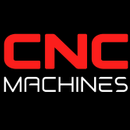What Are the Risks of CNC? Understanding Safety, Financial, and Operational Concerns in CNC Machining

What Are the Risks of CNC?
Understanding the Hazards, Challenges, and Precautions in CNC Machining
CNC (Computer Numerical Control) machining has revolutionized modern manufacturing, enabling precision, efficiency, and scalability. However, despite its high-tech advantages, CNC machining carries several risks that operators, manufacturers, and business owners should understand. These risks fall into several categories—physical safety, equipment damage, financial investment, and operational downtime. This article explores the most common CNC risks and how to mitigate them.
1. Operator Safety Risks
🔹 Flying Debris and Tool Breakage
High-speed machining generates metal chips, dust, and even broken tool fragments. These can become dangerous projectiles if proper guards or enclosures are not in place.
Prevention Tip: Always use machine enclosures, wear protective eyewear, and follow OSHA safety standards.
🔹 Entanglement Hazards
Loose clothing, long hair, and jewelry can become entangled in rotating parts, leading to serious injuries.
Prevention Tip: Implement a strict dress code and safety training program for all CNC operators.
🔹 High Voltage and Electrical Hazards
CNC machines run on high voltage systems. Improper maintenance or unauthorized tampering can result in electrocution or fire.
Prevention Tip: Only certified technicians should access electrical panels and perform repairs.
2. Programming and Human Error
🔹 Incorrect G-Code Programming
One wrong line of code can lead to collisions, tool breakage, or damage to expensive workpieces.
Risk Impact: Financial loss, machine damage, and production delays.
Prevention Tip: Simulate toolpaths before execution and double-check G-code with CAM software.
🔹 Lack of Training
Inexperienced operators are more likely to make setup or programming mistakes.
Prevention Tip: Provide ongoing training, certifications, and mentorship programs for new hires.
3. Machine and Tooling Damage
🔹 Poor Maintenance
Ignoring maintenance schedules can result in machine breakdowns or inaccurate parts.
Risk Impact: High repair costs and unexpected downtime.
Prevention Tip: Schedule routine maintenance and inspections. Use predictive maintenance tools when possible.
🔹 Improper Tool Selection or Setup
Using the wrong tool or failing to secure the workpiece can cause chatter, tool wear, or even catastrophic failure.
Prevention Tip: Match tool geometry with material type and machining parameters. Use torque wrenches and precision vices for setup.
4. Operational and Business Risks
🔹 Downtime Due to Software Glitches or Hardware Failures
Like any digital system, CNC relies on stable software and electronics. A glitch can bring production to a halt.
Prevention Tip: Maintain updated software and backup systems. Monitor machine health through IoT sensors.
🔹 Supply Chain Issues
Delays in getting raw materials, tools, or spare parts can impact production timelines.
Risk Impact: Missed delivery deadlines, reduced customer satisfaction.
Prevention Tip: Establish multiple suppliers and maintain a buffer stock of critical items.
5. Financial Risks
🔹 High Initial Investment
Purchasing a CNC machine can cost tens to hundreds of thousands of dollars.
Prevention Tip: Analyze ROI before purchase. Consider financing options, leasing, or buying used CNC machines.
🔹 Cybersecurity Threats
CNC machines connected to networks are potential targets for cyberattacks or ransomware.
Prevention Tip: Use secure networks, firewalls, and restrict remote access to only trusted users.
6. Environmental and Compliance Risks
🔹 Coolant and Waste Management
Improper disposal of coolant or metal shavings can result in environmental violations.
Prevention Tip: Follow EPA guidelines and consider closed-loop coolant filtration systems.
🔹 Regulatory Compliance
Failure to comply with workplace safety or emissions standards can result in fines or shutdowns.
Prevention Tip: Conduct regular audits and work with compliance consultants when necessary.
Conclusion: Risk Awareness Is Key to CNC Success
While CNC machining is a cornerstone of modern manufacturing, it comes with risks that must be proactively managed. From operator safety and programming errors to financial and operational challenges, understanding and addressing these risks ensures a safer, more profitable, and more efficient CNC operation.
Pro Tip: Investing in training, maintenance, and safety protocols is far less expensive than dealing with accidents or machine failures. Treat risk management as a core part of your CNC business strategy.
FAQs
✅ Is CNC dangerous?
CNC machines can be dangerous if not used properly. Risks include flying debris, electrical hazards, and programming errors.
✅ How can you reduce CNC risks?
Use proper PPE, follow safety procedures, ensure operator training, and regularly maintain your equipment.
✅ What are the financial risks of CNC?
High upfront costs, machine damage, and downtime can all lead to financial loss without proper planning and maintenance.
Want to buy or sell CNC machines with confidence? Visit CNCmachines.com for expert help, financing options, and a safe marketplace for your next CNC investment.


